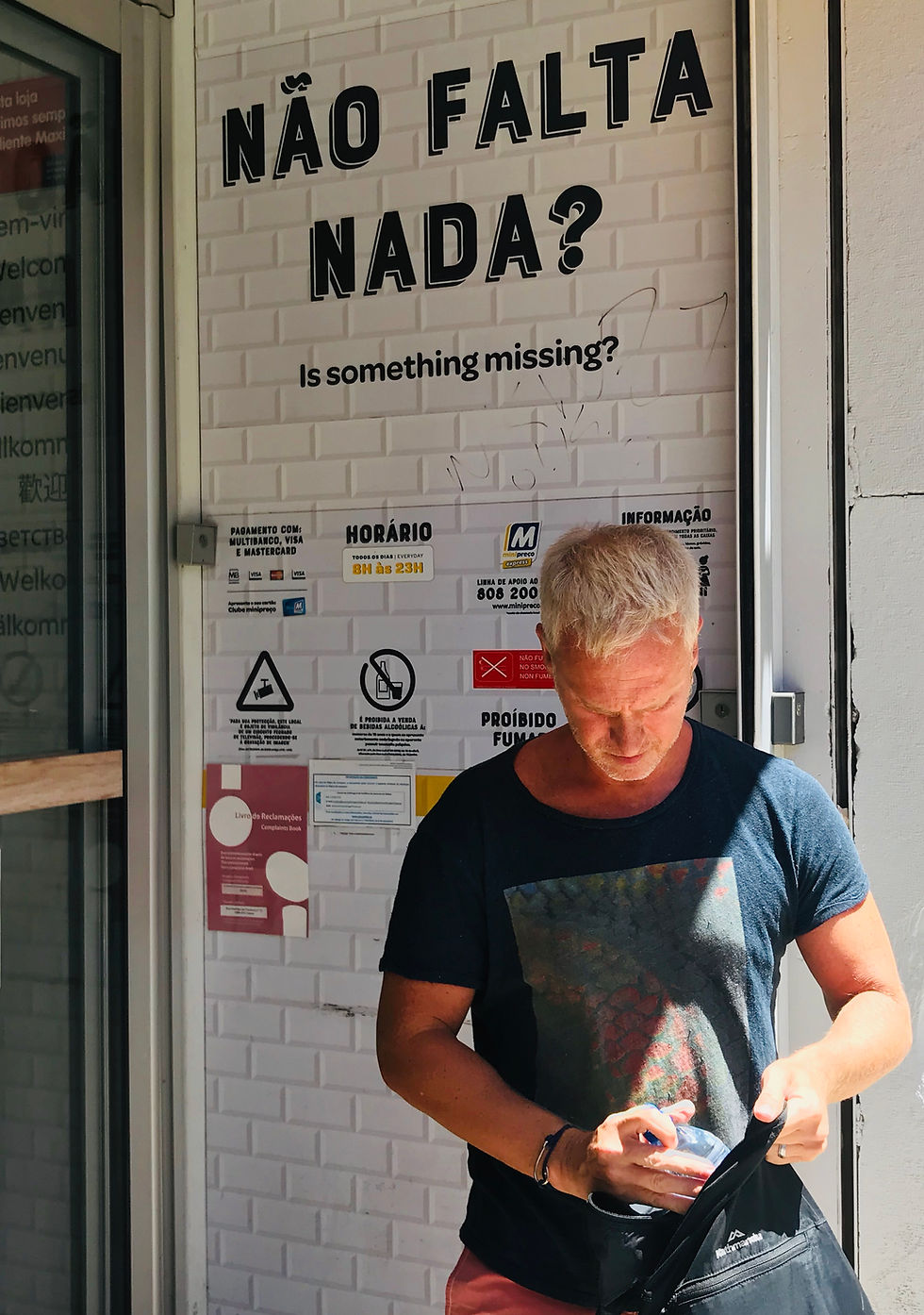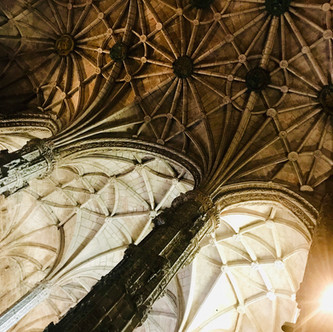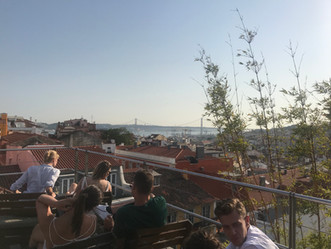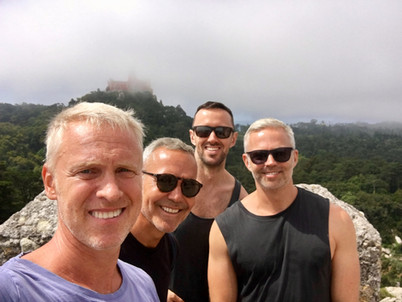Por favor e obrigado Lisboa
- RandE

- Aug 4, 2019
- 4 min read

When you have a bit of Spanish language skills, you might think Portuguese will be easy to pick up. Words like “agua”, “comer”, “de nada”, “bonito”, “desculpa” are pretty much the same -- but try to have a conversation with only that and you’re out of luck. A friend once told us, “Spanish is the language of ants – nin, nin, nin nin – whereas Portuguese is the language of the bees – zhu, zhu, zhu.” Singing verses buzzing. To the foreigner’s ear, he was so right. With visits to both Brazil and Portugal we got no closer to conversational Portuguese but could at least order “um copo de vino” and “uma cerveja, por favor”. It’s the essentials and we had plenty. . . and never forget to say obrigado.
We weren’t only unprepared language-wise but also research-wise. We added this destination as recovery time after a week of partying in Greece assuming it would be a slower, relaxed vibe where we wouldn’t feel guilty just lounging around a beach or sitting in a café people watching. What we found instead is a vibrant, energetic city that is in transition. Construction everywhere, old neighbourhoods being revitalised, a thriving food, design and arts scene and a huge tourist market. Sure the nightlife doesn’t rival other global hot spots, but overall Lisbon delivered.
We shared this stop with our friends Rob and James and took in what we could, still finding time for that beach recovery and relaxed three-hour meal. Nadine of Eco Tuk Tours got us started with a pretty good overview of the old section and some quality vantage points overlooking parts we would later explore on foot.
This place is sprawling on the banks of the Tagus River. It’s half million population jumps to over 2 million when the outlying neighbourhoods are included. On a daily basis, the traffic piles up on the Ponte 25 de Abril that has design connections to the Golden Gate and SF-Oakland Bay Bridges and we found ourselves in that parking lot a few times. Along the river in the Belem district, we visited MAAT - Museum of Art, Architecture and Technology - which contrasts a newly opened “wave-like” structure by Amanda Levete Architects’ Studio out of London with the Central Tejo Power Station, one of Portugal’s most prominent examples of industrial architecture. Nearby, we took in an extensive Banksy exhibit and then walked a few blocks to the Mosterios dos Jeronimos to see some of the 16th century influence on this part of the world. All impressive and all a nod to the depth of cultural experiences the city has to offer.
As with most of our trip, we walked and walked and walked. Through some mishaps with Airbnb, we stayed in both Bairro Alto and Principe Real which in hindsight gave us two different experiences that we loved. Casa Oliver our second location was especially unique and the attention to old-world detail was one of those “feels like you’ve stayed here before” experiences. . . highly recommended to anyone visiting that wants a friendly, intimate, relaxing vibe. One night at 10pm we walked for almost an hour to Alfama, the old part of town. The vibe changed from neighbourhood to neighbourhood and was electric on the streets. That late night, sidewalk/footpath culture is alive and well in Lisboa.
Comida e bebida
With a thriving traditional and contemporary foodie scene we could easily have spent the entire week eating. Through recommendations, research and a bit of chance we settled on some fantastic experiences.
We had drinks and nibbles with other travellers at Meson Andaluz, on the rooftop bar at Park, in the garden of Pharmacia, with sunset views at Memmo, on the footpath at Fares and slouched on beanbags at Athalo.
We tasted the traditional pastel de nata from Manteigaria
We had personalised service and toasted another Aussie’s birthday at Tapas Bar 52
And went the full hog with sit down meals at By the Wine, Palacio Chiado and a special celebration at 100 Maneiras (thanks R and J).
These places barely scratched the surface. Do some research or just wander around if you ever make this a destination.
Trying to get at least a few tourist sites outside of the city under our belt, we travelled to Sintra and hiked the Castelo dos Mouros. Amazing views and a bit of sweat expelled . . . needed after a few beers and wines the night before. The same day, we waited almost 2 hours in a queue to see the inside of the Palacio Nacional da Pena (Pena Palace). In all honesty we all agreed seeing it from below and on the terraces would have been enough and saved us the additional 10€, dry mouths and sore backs.
All in all, we still found time to relax and the beaches near Lisbon are fun, friendly and varied. There’re the local family areas, gay areas, clothing optional beaches and holiday goers in their cute little cottages. All of this is connected by a small commuter train along the dunes. It’s similar to those trains in zoos and gardens you see all over the globe . . . just filled with more sand. A couple of recommendation if you go: Get an Uber to drop you off at Praia Nova and then catch the train (8€ return) to your preferred stop AND, spend the 15€ on the sun umbrellas available from vendors in town or at the entrance to the beaches. There’s not much shade and you won’t last more than one day without it!
Lisbon was just a touch of Portugal for us and the introduction before we ventured to the more rural Algarve. We will be back hopefully this time a bit better prepared.
Obrigado e até amanhã.

























































































































































































































































































































Comments